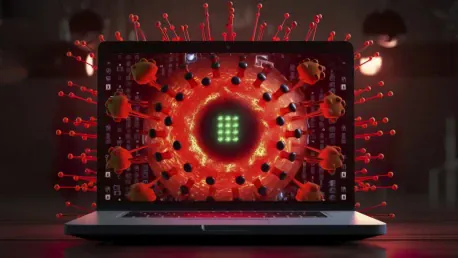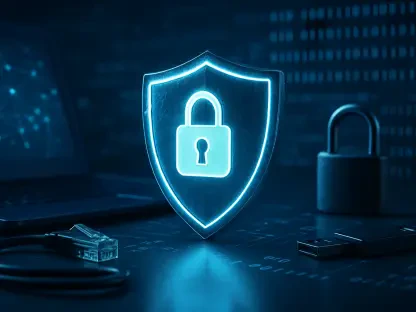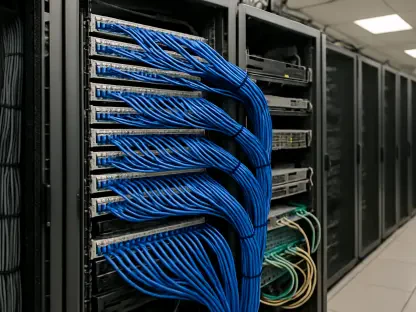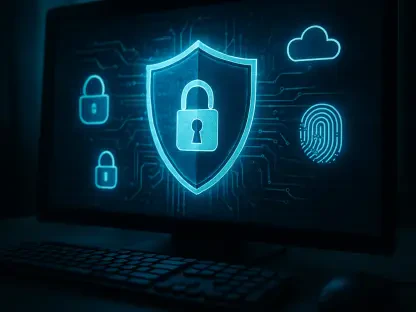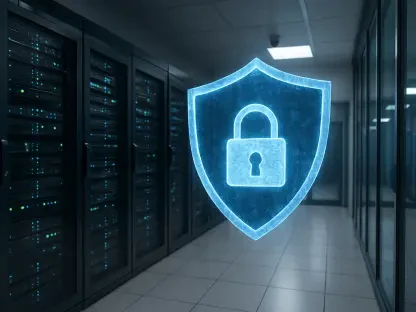A sudden shake-up in cybersecurity leadership paired with substantial strides in malware detection by a tech giant has prompted a wave of expert opinions. These recent developments underscore the ever-evolving landscape of digital security, emphasizing the need for vigilance in safeguarding against emerging threats.
Recent Turbulent Developments in Cybersecurity
The cybersecurity realm witnessed a significant upheaval when Cyber Command Chief Gen. Timothy Haugh was unexpectedly fired. This move, paired with Apple’s advanced malware detection enhancements in macOS, led industry professionals to scrutinize the implications for both political stability and technological progress in cybersecurity.
Connecting Threads: Why This Matters in Today’s Digital World
Understanding the intersection of political decisions and technological advancements is crucial in grasping the full implications of these events. With Gen. Haugh’s firing stirring political discourse and Apple’s technical innovations promising improved user protection, the interconnectedness of governance and technology becomes apparent. Both scenarios exemplify the future trajectory of cybersecurity and its impact on stakeholders.
A Quick Glance Ahead: What to Expect in This Article
This article provides an in-depth analysis from various experts regarding the Cyber Command leadership change and Apple’s proactive steps in malware detection. Comparing differing opinions, the discussion reveals the broader impact on the cybersecurity landscape and anticipates future developments.
Leadership Shake-Up: Firing of Cyber Command Chief
Cyber Command Chief Gen. Timothy Haugh’s sudden dismissal has sparked a wide array of responses from political analysts and cybersecurity experts. Some argue that the change might result in a temporary gap in leadership, potentially affecting coordinated cyber defense efforts. Others speculate that this political maneuver could signal a reevaluation of cybersecurity strategies at a federal level.
Examining the Fallout: Impacts of This Political Decision
The ramifications of Gen. Haugh’s firing extend beyond immediate operational disruptions. Experts suggest potential instability in international relations and collaborations in cybersecurity. By analyzing the impacts on existing cyber policies and defense mechanisms, it becomes evident that leadership stability is pivotal in maintaining robust cybersecurity postures.
Debates and Opinions: Varying Perspectives on the Leadership Change
Opinions are divided regarding the wisdom of replacing a key figure in cybersecurity governance. While some professionals see it as an opportunity to bring innovative perspectives to the forefront, others caution against the risks of introducing uncertainty in a critical domain. Industry voices emphasize the need to balance strategic advancements with proven security protocols.
Apple’s Tech Leap: Enhancements in macOS Malware Detection
In parallel with political shifts, Apple has made significant strides in bolstering its macOS malware detection capabilities. Security experts highlight these advancements as essential in the fight against increasingly sophisticated cyber threats. The enhancements aim to tackle malware attempts to bypass the Transparency Consent and Control (TCC) framework, reinforcing user protection.
Under the Hood: Technical Improvements and Security Focus
Apple’s technical improvements involve integrating advanced analytics and machine learning algorithms designed to identify and counteract emerging malware patterns. By focusing on transparency and user consent, these enhancements promise improved resilience against unauthorized data access, reflecting Apple’s commitment to user security.
Benefits and Concerns: How These Changes Could Shape User Experience
While the improved malware detection capabilities offer considerable benefits such as enhanced security and confidence in device usage, concerns arise regarding potential impacts on system performance. Balancing security advancements with optimal user experience presents a complex challenge, one that industry leaders continue to address through iterative updates and feedback.
The Intersection: Political Shifts and Technological Advances
The simultaneous occurrence of political changes and technological breakthroughs in cybersecurity illuminates the broader trends shaping the industry. The interplay between governance decisions and technological innovations prompts critical reflections on the future direction of cybersecurity policies.
Real-World Implications: How These Developments Affect Cybersecurity Strategies
Developments in leadership and technology have tangible implications for cybersecurity strategies. Political shifts may influence regulatory frameworks, while technological upgrades redefine defensive capabilities. The collective impact on cybersecurity strategies necessitates adaptive approaches, ensuring resilience amid evolving threats.
Industry Reactions: Opinions and Predictions from Security Experts
Security experts broadly recognize the transformative potential of the recent changes. Predictions vary, with some anticipating accelerated improvements in cyber defense protocols, while others foresee challenges in maintaining stability and coordination. Nonetheless, the consensus underscores the necessity for continuous advancements and proactive measures.
Innovation and Security: Emerging Trends in Cyber Defense
Emerging trends in cybersecurity highlight a concerted effort toward integrating innovative technologies with robust security practices. The shift towards AI-driven analytics and quantum computing exemplifies the pursuit of sophisticated defense mechanisms capable of outpacing cyber threats.
Beyond the Headlines: Regional Dynamics and Global Impact
Regional dynamics play a crucial role in shaping global cybersecurity landscapes. The ripple effects of political and technological shifts extend beyond borders, influencing international collaborations and collective defense strategies. A nuanced understanding of these dynamics is essential in navigating cybersecurity challenges effectively.
Future-Proofing: Preparing for the Next Wave of Cyber Threats
Proactive preparation against future cyber threats involves embracing cutting-edge technologies and fortifying existing defenses. Industry leaders stress the importance of continuous monitoring, adaptive strategies, and investment in research and development to stay ahead of potential vulnerabilities.
Comparative Insights: Cybersecurity Developments Across Giants
Comparing cybersecurity advancements among major tech players reveals varied approaches to enhancing user protection. Apple’s focus on malware detection stands alongside similar initiatives by other giants, each contributing unique innovations to the collective cyber defense arsenal.
Speculating the Future: Strategic Movements Expected in Cyber Policies
Strategic movements in cyber policies are anticipated to reflect recent developments, integrating advancements in technology and shifts in governance. Experts speculate on the potential directions, emphasizing the need for coherence and alignment in policy frameworks to ensure robust security measures.
Adding Value: Enhanced Security Measures for Users and Organizations
Enhanced security measures play a pivotal role in protecting both individual users and organizations. These improvements foster a safer digital environment and contribute to building trust in technology, underscoring the value of comprehensive and proactive cybersecurity practices.
Key Takeaways: Lessons from Recent Cybersecurity Events
Recent cybersecurity events underscore critical lessons in adaptability, vigilance, and innovation. The necessity for robust leadership, dynamic technological advancements, and collaborative efforts remains paramount in navigating an increasingly complex cyber landscape.
Strategic Recommendations: Best Practices in Cyber Defense
Strategic recommendations from experts highlight the importance of integrating advanced technologies, fostering international collaboration, and maintaining flexible policy frameworks. Best practices emphasize continuous improvement and proactive measures in fortifying cyber defenses.
Practical Advice: Applying Security Enhancements in Real-World Scenarios
Translating security enhancements into practical applications requires a multifaceted approach. Experts advocate for user education, regular system updates, and vigilant monitoring to effectively apply these improvements and safeguard against emerging threats in real-world scenarios.
Wrapping Up: Reflecting on the Significance of Recent Changes
The recent changes in cybersecurity leadership and technological advancements reflect significant progress and challenges. These developments have profound implications for future strategies and underscore the dynamic nature of the cybersecurity landscape.
The Road Ahead: Ongoing and Future Implications
The ongoing and future implications of these changes will shape the trajectory of cybersecurity. Continuous adaptation, proactive measures, and collaborative efforts are essential in maintaining a secure digital environment. The shared commitment to innovation and resilience will drive future advancements.
Final Thoughts: Encouragement to Stay Ahead in Cybersecurity
Remaining ahead in cybersecurity necessitates vigilance, innovation, and collaboration. As the landscape evolves, stakeholders are encouraged to stay informed, adopt best practices, and engage actively in shaping a secure future. The journey toward robust cybersecurity demands persistent dedication and proactive strategies.
